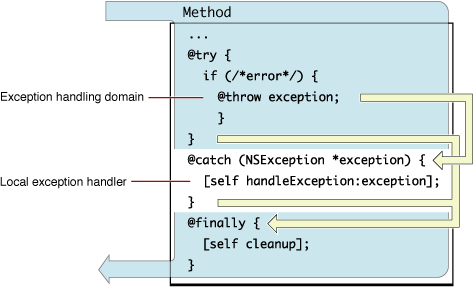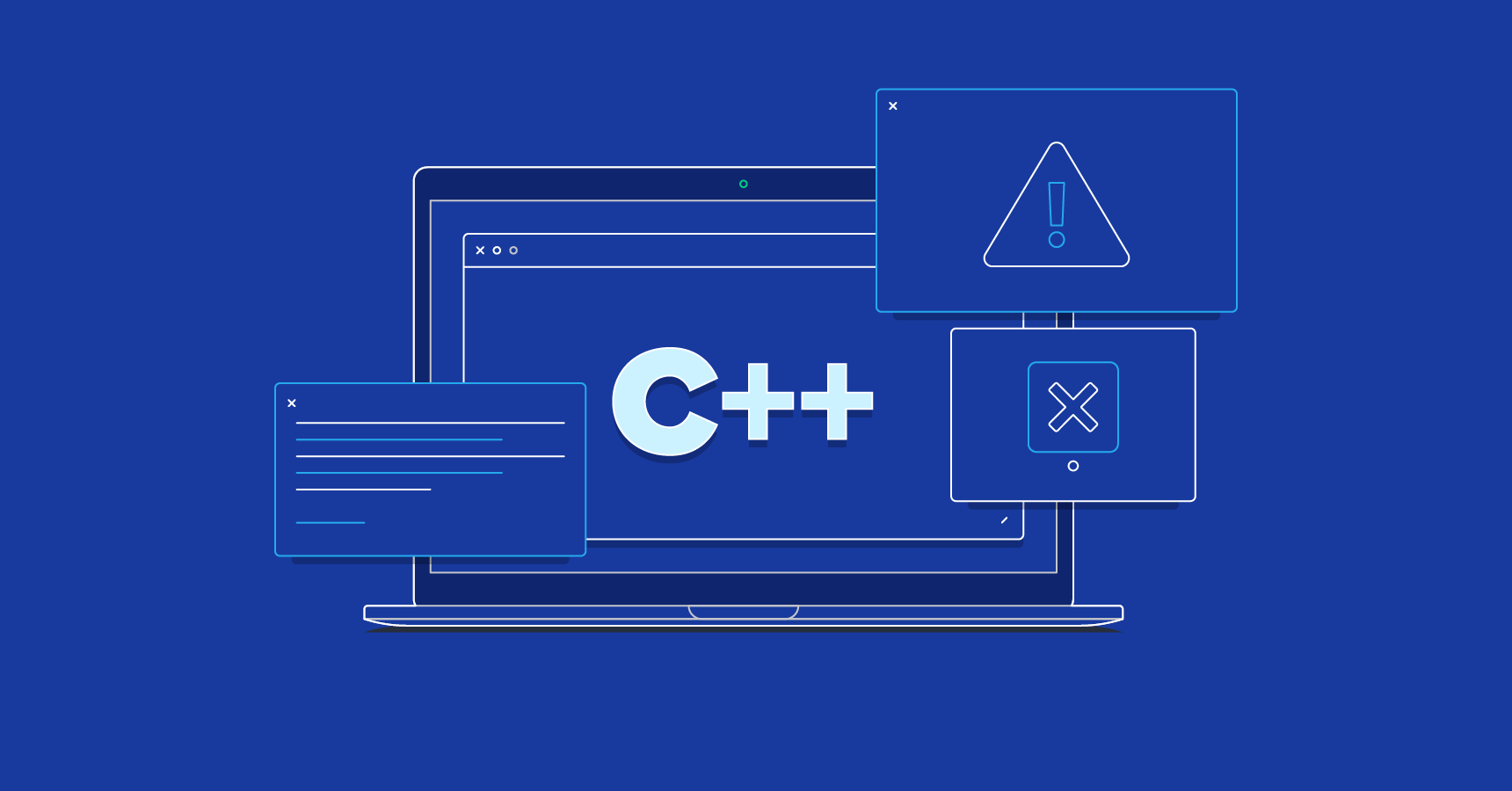Throw Exception Caught Locally
## Overview of Throwing Exceptions in Local Code
Throwing an exception means interrupting the normal execution flow of a program and signaling that an error or an exceptional condition has occurred. This exception can take the form of a predefined exception class or a custom exception defined by the developer. When an exception is thrown, the program stops executing the current block of code and jumps to a specific block dedicated to handling the exception.
## Benefits of Catching Exceptions Locally
Catching exceptions locally offers several advantages. Firstly, it prevents the program from crashing abruptly due to unhandled exceptions, allowing it to gracefully recover from errors. Secondly, it provides an opportunity to log the exception details for debugging purposes, helping developers identify the cause of the issue more easily. Finally, catching exceptions locally enables developers to execute custom error-handling logic tailored to their specific application requirements.
## Handling Exceptions Locally in Different Programming Languages
Different programming languages provide mechanisms to catch exceptions locally. Some common examples include:
1. Node.js: In Node.js, exceptions can be handled using the `try-catch-finally` block. Developers can place the code that might throw an exception inside the `try` block, which is followed by a `catch` block to handle the exception and a `finally` block for executing cleanup actions.
2. TypeScript: TypeScript allows developers to catch exceptions using the traditional `try-catch-finally` mechanism, similar to JavaScript. Additionally, it supports type checking during the catch process, providing more robust error handling.
3. JavaScript: JavaScript uses the same `try-catch-finally` approach as Node.js and TypeScript. Developers can place potentially problematic code in the `try` block and handle any exceptions in the associated `catch` block. The `finally` block is used for defining cleanup activities that should be performed regardless of exceptions.
4. Java: Java also employs the `try-catch-finally` paradigm for exception handling. Developers can specify the type of exception they want to catch in the `catch` block, allowing for more precise error handling.
5. C#: C# utilizes the `try-catch-finally` mechanism as well. Similar to Java, developers can specify the type of exception they want to catch in the `catch` block to handle specific exceptions differently.
## Best Practices for Throwing and Catching Exceptions Locally
To ensure effective handling of exceptions, it is essential to follow best practices:
1. **Throw meaningful exceptions**: When throwing exceptions, provide informative error messages that accurately describe the problem. This helps developers understand the issue and take appropriate action to resolve it.
2. **Catch specific exceptions**: Catching and handling specific exceptions rather than just catching all exceptions improves maintainability and allows for more targeted error handling.
3. **Avoid catching exceptions excessively**: Catch exceptions only when necessary and avoid catching exceptions that cannot be adequately handled. Allow exceptions to propagate up the call stack when appropriate.
4. **Log exception details**: Logging exception details, such as the stack trace, can significantly aid in debugging and troubleshooting, providing valuable insights into the cause of the problem.
## Common Mistakes to Avoid when Catching Exceptions Locally
While catching exceptions locally is crucial, it’s important to avoid common pitfalls that can lead to unreliable code. Some common mistakes to avoid include:
1. **Ignoring exceptions**: Catching an exception and doing nothing with it effectively hides the error, making it harder to diagnose and fix issues.
2. **Catching overly broad exceptions**: Catching all exceptions indiscriminately can lead to the inability to distinguish between different types of errors, potentially resulting in incorrect error handling.
3. **Relying solely on exception handling**: While exceptions are powerful tools, they should not be the only means of handling errors. Combining them with other error-handling techniques, such as validation and defensive coding, improves code reliability.
## Examples of Catching Exceptions Locally in Real-World Scenarios
To showcase the practical use of catching exceptions locally, let’s consider a few scenarios:
1. **File read error**: When reading a file, an exception might occur due to file not found, insufficient permissions, or corrupted file content. By catching this exception locally, the program can display a meaningful error message to the user and request a different file or retry the operation.
2. **Database connection failure**: When connecting to a database, exceptions can occur due to network issues or incorrect credentials. By catching these exceptions locally, developers can log the error, attempt alternative connection approaches, or display a user-friendly message suggesting potential solutions.
## Advanced Techniques for Handling Exceptions Locally
While basic exception handling is typically sufficient for most cases, some advanced techniques can further improve error handling:
1. **Creating custom exceptions**: In addition to using built-in exceptions, developers can create custom exception classes that provide specific information about the problem. This can help differentiate between various exceptional conditions and provide more targeted error handling.
2. **Using exception filters**: Some languages, like C#, allow the use of exception filters. Filters can be used to selectively catch exceptions based on additional conditions, enabling even more fine-grained error handling.
## FAQs
**Q: How do you throw an exception in Node.js?**
A: In Node.js, exceptions can be thrown using the `throw` keyword followed by the exception object. For example: `throw new Error(‘Something went wrong.’);`
**Q: How do you throw an exception in TypeScript?**
A: Throwing exceptions in TypeScript follows the same approach as JavaScript and Node.js. Simply use the `throw` keyword followed by the exception instance: `throw new Error(‘An error occurred.’);`
**Q: How do you catch exceptions in JavaScript using the try-catch block?**
A: In JavaScript, you can catch exceptions using the `try-catch` block. Place the code that might throw an exception inside the `try` block and use the `catch` block to handle the exception. Example:
“`
try {
// Code that might throw an exception
} catch (error) {
// Exception handling logic
}
“`
**Q: Why is my try-catch block not catching the error in JavaScript?**
A: Ensure that the code that throws the exception is actually executed within the `try` block. Additionally, double-check that the exception type matches what is being caught in the `catch` block. If the error is asynchronous, make sure you are handling it correctly, as JavaScript’s `try-catch` block only captures exceptions that are thrown synchronously.
**Q: How can I throw an error with a specific status code in Node.js?**
A: To throw an error with a specific status code in Node.js, you can use the `throw new Error()` approach and include additional properties to define the status code. For example:
“`
const error = new Error(‘Not Found’);
error.statusCode = 404;
throw error;
“`
**Q: What should I do if an expected Error object is not thrown?**
A: If an expected `Error` object is not being thrown, double-check the logic to ensure the exceptional condition is met. Additionally, review any relevant error handling mechanisms or dependencies to ensure they are functioning correctly.
In conclusion, throwing and catching exceptions locally is a crucial aspect of writing reliable and robust code. By employing the appropriate exception handling techniques and adhering to best practices, developers can effectively handle errors, improve code maintainability, and enhance overall application stability.
Javascript : How To Fix \”‘Throw’ Of Exception Caught Locally\”?
Keywords searched by users: throw exception caught locally Nodejs throw exception, TypeScript throw exception, JavaScript try catch, Try catch response, Try/catch not catching error JavaScript, Nodejs throw error with status code, Throw error with status code JavaScript, Expected an Error object to be thrown no-throw-literal
Categories: Top 69 Throw Exception Caught Locally
See more here: nhanvietluanvan.com
Nodejs Throw Exception
## Understanding Exceptions in Node.js
An exception is an abnormal condition that occurs during the execution of a program and disrupts the normal flow of code. When an exception occurs, Node.js generates an error object that contains information about the error, such as its message, stack trace, and error code.
## Throwing Exceptions in Node.js
In Node.js, exceptions can be thrown explicitly using the `throw` statement. The `throw` statement allows developers to create custom errors and throw them when certain conditions are met. For example, consider the following code snippet:
“`javascript
function divide(num1, num2) {
if (num2 === 0) {
throw new Error(‘Cannot divide by zero!’);
}
return num1 / num2;
}
“`
In the above code, if the `num2` parameter is 0, an exception with a custom error message will be thrown. This allows developers to handle exceptional cases explicitly and provide meaningful error messages to users or loggers.
## Handling Exceptions with Try-Catch Blocks
To catch exceptions thrown within a block of code, Node.js provides the `try-catch` statement. The `try` block contains the code that may throw an exception, while the `catch` block handles the thrown exception. Consider the following example:
“`javascript
try {
const result = divide(10, 0);
console.log(result);
} catch (error) {
console.error(error.message);
}
“`
In the above code, the `divide` function is called with `10` and `0` as arguments, which will result in an exception being thrown. The `catch` block will catch the exception and log the error message, which is “Cannot divide by zero!” in this case.
## Uncaught Exceptions in Node.js
Sometimes, exceptions occur outside of a `try-catch` block or are not handled by any `catch` block. These exceptions are known as uncaught exceptions. If an uncaught exception occurs in a Node.js application, it will terminate abruptly, causing the application to crash. To prevent such crashes, Node.js provides the `process` object to catch unhandled exceptions.
“`javascript
process.on(‘uncaughtException’, (error) => {
console.error(‘An uncaught exception occurred:’, error);
});
“`
By attaching an event listener to the `uncaughtException` event, you can handle uncaught exceptions gracefully. In the above code, the event listener logs the error message and prevents the application from crashing.
## Best Practices for Exception Handling in Node.js
To ensure robust error handling in your Node.js applications, consider the following best practices:
1. **Handle exceptions at appropriate levels**: Exceptions should be handled at the appropriate level of your application. Handle exceptions close to where they occur, as it allows for better error localization and code readability.
2. **Use specific error types**: Use custom error types to classify different types of exceptions. By categorizing exceptions, you can create different error handlers for specific error types, making your code more maintainable.
3. **Log errors**: Logging exceptions is essential for debugging and monitoring purposes. Logging error messages, stack traces, and additional context can help identify the root cause of issues and provide valuable insights for troubleshooting.
4. **Graceful process termination**: When catching unhandled exceptions, ensure that your application terminates gracefully. Close any open resources, save necessary data, and send appropriate shutdown messages before exiting the process.
5. **Implement error middleware**: In web applications built on Node.js, implement error middleware that handles any uncaught exceptions and sends appropriate responses to clients. This way, users receive meaningful error messages instead of being presented with server-side technical details.
## FAQs
**Q: Can I throw exceptions within asynchronous functions?** \
A: Yes, you can throw exceptions within asynchronous functions. However, ensure that you appropriately handle these exceptions when working with asynchronous control flow mechanisms, such as promises or async/await.
**Q: How do I handle exceptions thrown from external modules in Node.js?** \
A: To handle exceptions thrown from external modules, you can wrap the code that interacts with the module inside a `try-catch` block. Handle the exceptions in the `catch` block or add a custom error handler within the catch block.
**Q: Are uncaught exceptions always fatal in Node.js?** \
A: Yes, uncaught exceptions can lead to the termination of the Node.js process. To handle them gracefully, you can use the `process.on(‘uncaughtException’, …)` event listener.
In conclusion, exception handling is crucial for building robust and reliable Node.js applications. By understanding how to throw exceptions, utilizing try-catch blocks, and handling uncaught exceptions, developers can create applications that gracefully handle errors and provide a better user experience. Remember to follow best practices for exception handling to ensure your application remains stable and error-resistant.
Typescript Throw Exception
Introduction
In any programming language, error handling is a crucial aspect that ensures the stability and reliability of software applications. TypeScript, a statically typed superset of JavaScript, introduces the concept of exception handling to enhance the robustness of code. In this article, we will delve into how to throw exceptions in TypeScript and explore various scenarios where exception handling becomes indispensable.
Understanding Exceptions
Exceptions, in the context of software development, are unexpected events or conditions that disrupt the normal flow of a program. When an exceptional situation occurs, such as a run-time error or an invalid input, developers can throw an exception to notify the calling code that something has gone wrong. By throwing an exception, the code execution is interrupted, and the program transfers control to an exception handler.
Throwing an Exception in TypeScript
In TypeScript, throwing an exception involves using the `throw` statement followed by an expression or an object. The expression or object represents the type of exception being thrown. Let’s consider a simple example where we throw a custom exception:
“`typescript
class CustomException {
constructor(public message: string) {}
}
function divide(a: number, b: number): number {
if (b === 0) {
throw new CustomException(“Divide by zero is not allowed.”);
}
return a / b;
}
try {
console.log(divide(10, 0));
} catch (error) {
console.log(“Error occurred: ” + error.message);
}
“`
In the above code snippet, we define a custom exception `CustomException` that takes a message as a parameter. The `divide` function checks if `b` is zero before performing the division. If the condition is true, it throws the `CustomException`. The calling code, wrapped in a `try-catch` block, captures the exception and prints the corresponding error message.
Exception Propagation
When an exception is thrown, TypeScript searches for an exception handler that can handle the exception immediately. If no suitable handler is found, the exception propagates up the call stack until it reaches the top-level handler or the application terminates. This allows for the proper cleanup of resources and graceful termination of the program.
Built-in Exception Types
TypeScript provides several built-in exception types that cover commonly encountered scenarios. Some of these include:
– `Error`: The most generic exception type in TypeScript. It can be used as a base class for custom exceptions.
– `RangeError`: Thrown when a numeric value is outside the range of legal values.
– `TypeError`: Raised when the actual type of an operand does not match the expected type.
– `SyntaxError`: Indicated when a program violates the syntax rules of TypeScript or JavaScript.
Frequently Asked Questions
Q: What is the difference between throwing an exception and returning an error code?
A: When an exception is thrown, it immediately transfers control to the nearest exception handler, allowing for detailed error reporting and potential recovery. On the other hand, returning an error code requires explicit checking after every function call, which can clutter the code and make error handling less robust.
Q: Can I create my own custom exception types in TypeScript?
A: Yes, TypeScript allows you to define your custom exception types by creating classes that extend the built-in `Error` class or any other relevant exception type. This approach enables you to have more control over the exception hierarchy and provide meaningful error messages.
Q: How can I handle multiple exceptions in TypeScript?
A: TypeScript provides the `try-catch` statement that allows you to handle multiple exceptions separately. You can use multiple `catch` blocks to specify different exception types and define specific handling logic for each case.
Q: Is it necessary to catch every thrown exception?
A: It depends on the particular scenario and the nature of the application. In general, it is recommended to catch exceptions that you can handle effectively and propagate exceptions that you cannot handle to higher-level exception handlers.
Q: Can exceptions be thrown asynchronously in TypeScript?
A: Yes, TypeScript supports asynchronous exception handling using promises and the `async`/`await` keywords. You can throw and catch exceptions within async functions or handle rejected promises in a catch block.
Conclusion
Exception handling plays a vital role in writing robust and maintainable software applications. TypeScript provides a concise and powerful mechanism for throwing and catching exceptions, enabling developers to handle exceptional situations gracefully. By understanding the basics of exception handling in TypeScript and utilizing it effectively, developers can improve the reliability and stability of their codebase.
References:
– TypeScript Handbook: Exception Handling. Retrieved from https://www.typescriptlang.org/docs/handbook/2/everyday-types.html#exceptions
Images related to the topic throw exception caught locally

Found 41 images related to throw exception caught locally theme



![warning]'throw' of exception caught locally Warning]'Throw' Of Exception Caught Locally](https://storage.googleapis.com/zenn-user-upload/avatar/ec9b05d548.jpeg)




Article link: throw exception caught locally.
Learn more about the topic throw exception caught locally.
- How to fix “‘throw’ of exception caught locally”? – Stack Overflow
- [Solved]-How to fix “‘throw’ of exception caught locally”?-node.js
- Javascript – How to fix “’throw’ of exception caught locally”
- How to Throw Exceptions in Node.js – Rollbar
- [warning]’throw’ of exception caught locally – Zenn
- Error handling, “try…catch” – The Modern JavaScript Tutorial
- [Node.js] Throw of exception caught locally – velog
See more: nhanvietluanvan.com/luat-hoc